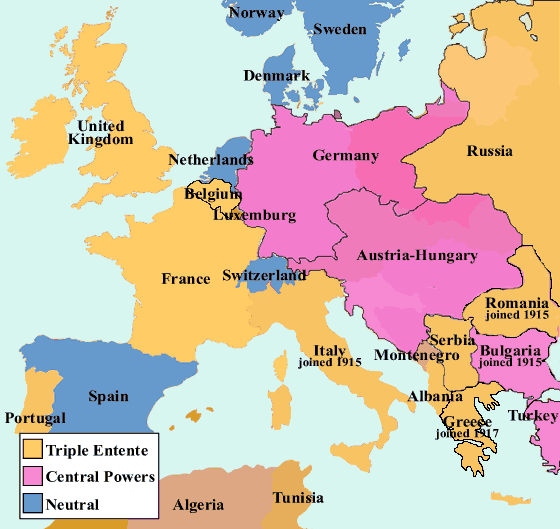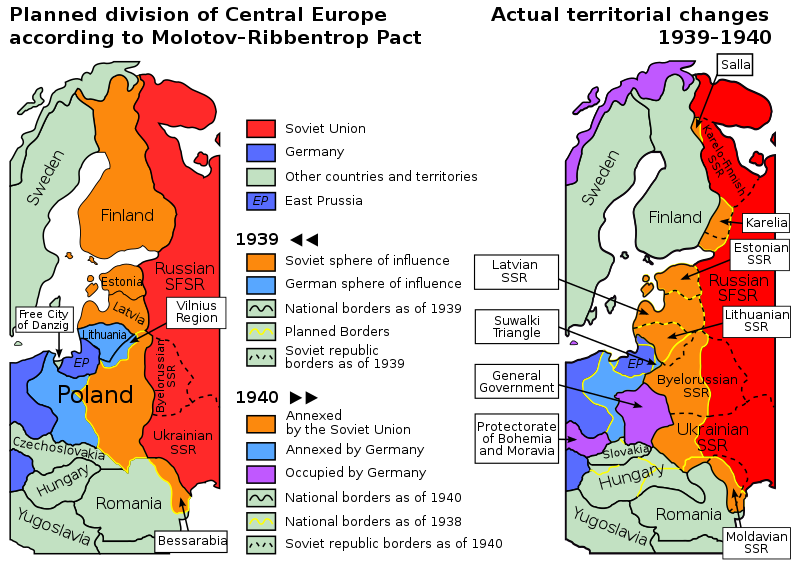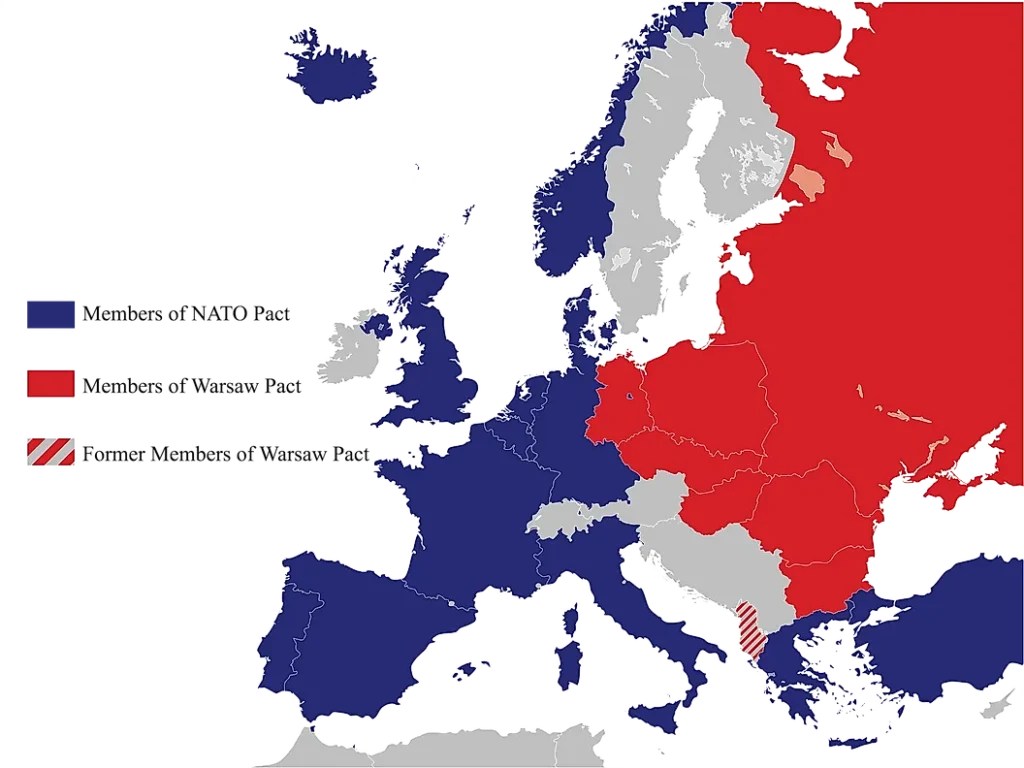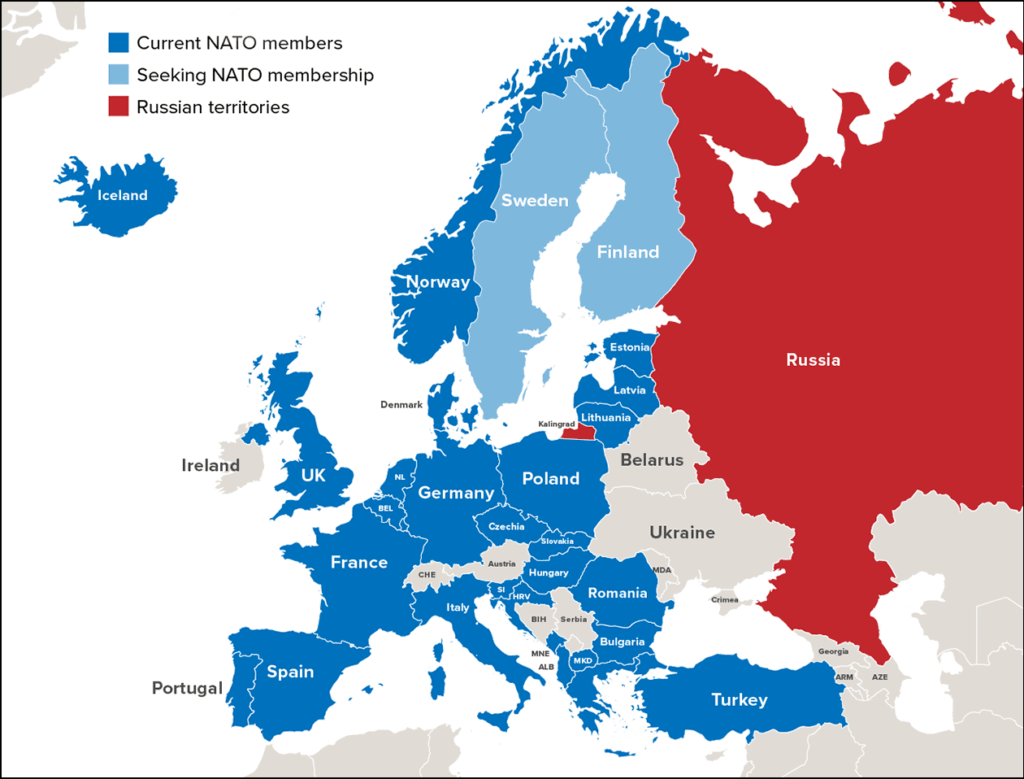Vladimir Putin’s invasion of Ukraine has lasted now over seven months. What many imagined to be a quick overwhelming by Russia of the Ukraine military has turned into a brutal slugfest, with Ukraine now appearing to have the upper hand in the fighting on the ground.
Many notable apologists for Russia in the West, among them people like John Mearsheimer of the University of Chicago, Roger Waters of the band Pink Floyd, Jeffrey Sacks of Columbia University, and Amy Goodman of Democracy Now!, have blamed NATO for instigating Russia’s war against Ukraine by promoting the eastward expansion of NATO. As the argument goes, the United States caused Russia to invade Ukraine by threatening Russia by considering allowing Ukraine to join NATO and the current war is just a continuation of attempts by the West, led by the United States, to dominate and destroy Russia.
The truth of the matter is much different.
At the beginning of World War I, France, England and Tsarist Russia were allies in fighting against Imperial Germany and the Austrian-Hungarian Empire, the so-called Central Powers. Clearly the dividing line was not East and West. While World War I still raged and after the fall of the Tsars and the Bolshevik Revolution, the newly formed Communist government in Russia attempted to make peace with Imperial Germany.

After the end of World War I with the defeat of Germany, the Russian dominated Union of Soviet Socialist Republics, or USSR, sought military cooperation with Germany to rebuild both German and Russian military might. This allowed Germany to evade the restrictions brought about by the Treaty of Versailles which severely limited both the numbers and kinds of forces Germany could have. From the early 1920’s to the early 1930’s, the German and Soviet militaries cooperated in developing weapons and training officers, mostly on Soviet territory, far from the watchful eye of England and France and others.
Although the cooperation between Germany and the USSR waned in 1933 with the rise to power of Adolph Hitler and the Nazi Party, the two nations again formed an alliance with the signing of the Ribbentrop-Molotov Pact in 1939. This treaty, negotiated on behalf of the two great dictators of World War II, Germany’s Adolph Hitler and the Soviet Union’s Joseph Stalin, divided all the smaller nations between the two behemoths, most notably Poland. World War II began in earnest in Europe with Germany’s invasion of Poland in early September of 1939 and the Soviet Union’s invasion a few weeks later. In short order Poland was wiped off the map by Germany and the USSR, as well as independent Estonia, Latvia, and Lithuania. Finland was only able to keep from being subsumed into the Soviet Union by a stubborn and heroic defense during the so-called Winter War. Importantly, when Germany invaded Poland from the west as envisioned by the Ribbentrop-Molotov Pact, France and Great Britain declared war on Germany, but when the Soviet Union invaded Poland from the east as envisioned by the exact same Ribbentrop-Molotov Pact, neither France nor Great Britain declared war on the Soviet Union. The United States sat on the sidelines throughout.

The alliance between Nazi Germany and the Soviet Union continued while Germany conquered much of western Europe, including France. During this time Russia supplied Germany with foodstuffs and important raw materials, including oil, rubber, and metals, and Germany supplied the Soviet Union with manufactured goods, including weapons. This unholy alliance only ended when Germany attacked Russia in June of 1941. So for over a year and a half, the Russian dominated Soviet Union was allied with Nazi Germany and supplied many of the crucial raw materials that allowed Hitler to conquer most of Europe.

After the end of World War II, the Soviet Union continued its expansion west by occupying and installing puppet Communist governments throughout eastern Europe, including the eastern part of defeated Germany. These Russian dominated regions formed what was the Warsaw Pact. In western Europe, the United States, along with France, Britain, and western Germany, formed the North Atlantic Treaty Organization, or NATO. One of the important aspects of NATO’s formation was that in addition to being a bulwark against Russian dominated eastern Europe, NATO served the important function of integrating western Germany militarily with Germany’s centuries long off and on adversaries, France and Great Britain.

With the advent of the standoff between NATO and the Warsaw Pact, the formulation of the conflict in Europe as a conflict between the East, dominated by Russia, and the West, dominated by the United States, came into vogue. This standoff continued until the dissolution of the Soviet Union and the Warsaw Pact. Although Russian Dictator Putin famously said the “collapse of the Soviet Union was a major geopolitical disaster of the century,” those nations under Russia’s thumb did not see it as such. Many of the eastern European Warsaw Pact countries, including East Germany, Poland, Hungary, Bulgaria, both Slovakia and the Czech Republic, and Romania, all sought and were granted membership in NATO in order to protect themselves against future Russian domination. NATO did not so much look east as the eastern European peoples that were under Russia’s thumb looked west. Even many former Soviet Republics like Estonia, Latvia, and Lithuania sought membership in NATO to assure that they would never again be subject to Russia occupation and domination.

The Ukrainians are just one of many of Russia’s neighbors, formerly firmly within the East, that are now looking west and who now see themselves and want to be seen as part of the West. Ukraine’s overtures to the West have everything to do with their fully realized fears of Russia, and little to do with any sinister United States’ lead plan to encircle Russia. As we watch Russia’s war against Ukraine unfold, look to who are Ukraine’s greatest supporters in NATO. Ukraine’s most faithful allies in NATO are Poland, Latvia, Lithuania, and Estonia, the countries who are Russia’s nearest neighbors in Europe and who have the most firsthand experience with Russia’s domination. These countries are also the countries in NATO least likely to trade their principles for Russian raw materials.
Carefully watch Russia’s southern neighbors as well, the former Soviet Republics of Kazakhstan, Kyrgyzstan, Uzbekistan, Turkmenistan, and Azerbaijan, as they delicately and discreetly maneuver away from Russian hegemony. These countries, primarily Turkic, are certainly not within what anyone would call the West. Like the eastern European peoples who became or want to become members of NATO, these peoples too want to free themselves of centuries of Russian domination, and they slowly are. Whether openly stated or not, this is one of the primary purposes of the Turkic Council.

Russia is not in a confrontation with the West, Russia is in a confrontation with all of its neighbors. Russia’s rulers have not learned from history, but they are being taught a very painful lesson now. Russia has ruled for centuries by fear, but few seem fearful of Russia today. For this reason Russia’s domination of all their nearest neighbors is coming to a slow and painful end. Russia’s time as a great military power is also fading into history.